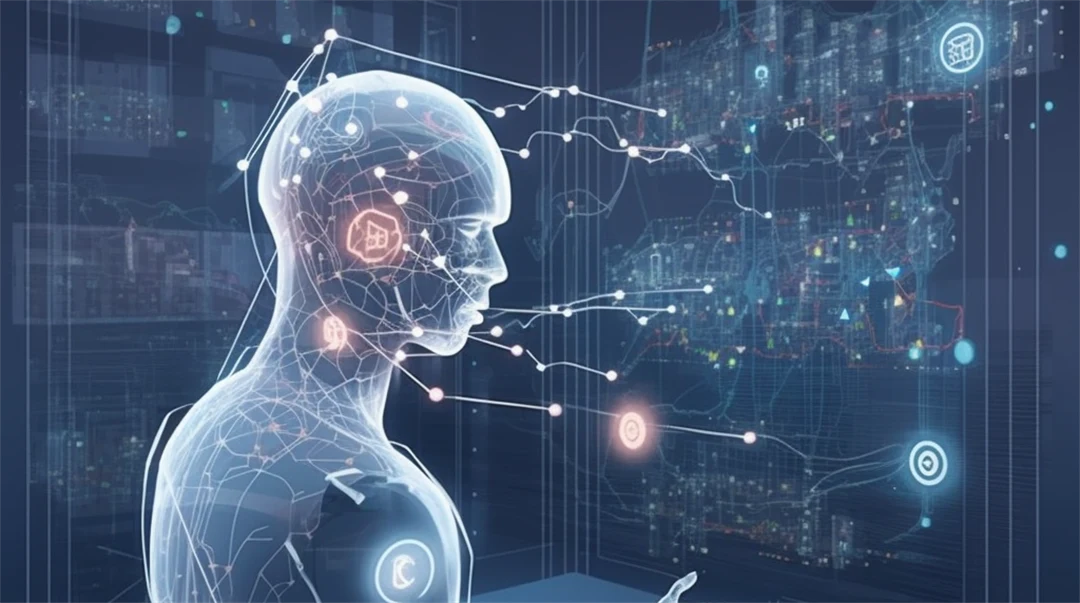AI and learning ‑ for students at Mid Sweden University
As a student, you have probably come across the concept of artificial intelligence (AI) in various contexts. In connection with studies at university, there is often talk of cheating with the help of AI, but AI can also be a great benefit in your studies.
Generative AI and cheating
To start off, it is important that you as a student know that academic dishonesty, or simply put cheating, can have major consequences. It is your responsibility to keep track of what is permissive and what can be considered cheating. Sometimes it can feel tricky to know what counts as cheating and what does not, and developing knowledge about this and a sense of what is called academic honesty (or integrity) is an important part of your studies. You should know that you are always responsible for what you write or say, and that you really understand and know what you claim to know in, for example, an exam or assignment. Read more about cheating and academic honesty below.
Introduction to generative AI and academic honesty
Generative artificial intelligence is about so much more than the issue of cheating. Here you will get a basic introduction to generative AI and how students can think about the use of it. To begin with, AI tools can be an excellent tool for students. However, you need to be aware that you are always responsible for your own learning, meaning that an AI tool cannot learn things for you. You must be able to demonstrate and use the skills you acquire during your studies both then and in your future profession. An AI tool can help you in the learning process, but never replace your own understanding and skills. Academic honesty is an important concept to know. If you haven't come across that term, you can read more about it below. As a student, you also need to have knowledge of how AI tools work and whether, and how, using them in the course in question is allowed.
If you have questions about the use of generative AI in courses you are taking and in examinations, your first point of contact is your course coordinator.
Advice to students on the use of AI:
- You need to know if and how your teachers allow the use of generative AI in the course in question and in examinations. If the teacher has not said that it is allowed to use AI, you must assume that it is not allowed in your production of material or examinations. Ask your teacher rather than assume anything.
- You need to understand the opportunities and limitations of generative AI tools when it comes to learning. They can be a great help to you in your studies, but you should also be aware that it is you who must acquire the knowledge in the course and that you must always be able to account for the content you produce - that is, that you must understand and know what you produce and not pass off something you do not know or understand as your own.
- An AI service is not a source to take information from, and using such a service is not like searching the internet. Even AI services that are connected to the internet require you to critically examine what you find. Please watch this film produced by the University of Gothenburg on how a language model such as ChatGPT works. Be source critical.
- You always need to be able to account for how you have used generative AI tools.
- ou need to know the rules that apply to cheating and plagiarism and what penalties this can lead to. You can read about this, among other things, on the student web.
Pages with information about your rights and obligations
As a student at Mid Sweden University, you have access to the AI service Microsoft Copilot via your student account. You can access it when you are logged in with your miun account in the browser Edge or on https://copilot.microsoft.com/ where you also log in. Remember to always check with your teacher how you are allowed to use Copilot or other AI services.
Key questions to ask yourself when using generative AI tools:
- Is this permitted use in the context in which I intend to use the tool?
- Is this unreflective relief, that is, is this good for my learning? (Do you miss any learning by using the tool?)
- Are there language errors?
- Are there factual errors?
- Are there skewed perspectives or skewed values (bias)?
- Am I about to send sensitive information?
-
AI - artificial intelligence
There are many definitions of what artificial intelligence is, but it is about technologies/machines that somehow act like a human, to some extent think like a human, perform actions that we associate with human intelligence, can identify patterns in complex data and is self-learning to some extent. Artificial intelligence comes in many forms and we encounter it in everyday life when we take pictures with our mobile phone's camera, get series recommendations on streaming services or suggested email replies.
-
Basic model
In AI, a "foundational model" is a pre-trained model that serves as a starting point for further specialization. Both generative AI and language modeling use foundational models to leverage the knowledge and insights already gained through extensive pre-training, saving time and resources when training models for specific tasks. In other words, you build on basic models to create models that are better at specific tasks.
-
Generative AI
Generative AI is a variant of artificial intelligence that is trained to create, i.e. generate, something new such as text or images based on the data that the model has been trained on. ChatGPT, Bing AI, Perplexity.ai, Dall-E, Midjourney, and similar tools are examples of generative AI.
-
Language Model - Large Language Model/LLM
A large language model (LLM) such as ChatGPT is simply an algorithm that determines how likely a sequence of words is in a given sentence and generates text based on this. A language model is generative AI and a variant of the basic model. The language models are trained on very large amounts of text (data) from different sources and then put together text based on what seems likely in response to the input/prompt given. The texts that are generated should only be seen as a text composed on the basis of probability and may contain factual errors.
-
Chatbot
A chatbot is a computer program that has been trained with AI to mimic human oral or written conversation based on probability. There are very simple chatbots that can only handle simple questions, but also very advanced ones that can handle complex conversations.
-
Algorithm
An automated sequence of instructions. As a recipe for baking approximately, with "if this happens" -- > "then this happens" steps in different complexity.
-
Machine learning and deep learning
Machine learning involves developing algorithms and models that become better at their task through training and input to be able to make their own decisions. Input into the learning process can be human.
Deep learning is machine learning through the use of neural networks - which allows for more complex learning. Deep learning can be guided by humans, to varying degrees. Common in image classification, language processing and sound recognition.
-
Data/training data
Data is simply information that is recorded somewhere and training data is the data that is used to train an AI model through machine learning. Data can be text, music, images, and so on.
-
Neural networks
Neural networks or neural networks are advanced self-learning algorithms that try to mimic the function of biological neural networks (e.g. the brain). These are an important part of deep learning in machine learning and thus also in generative AI.


